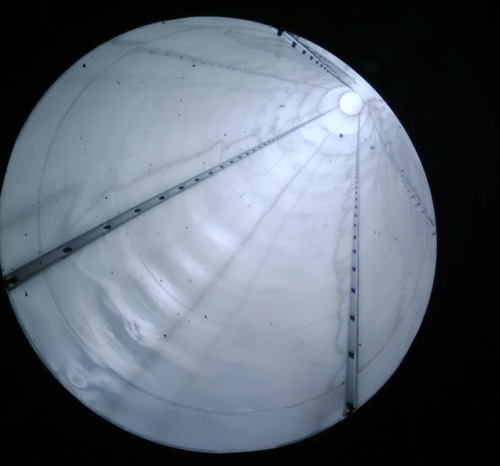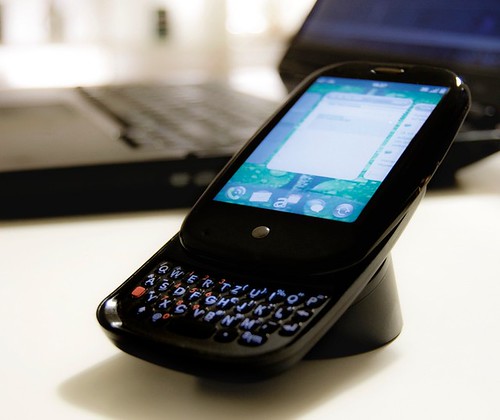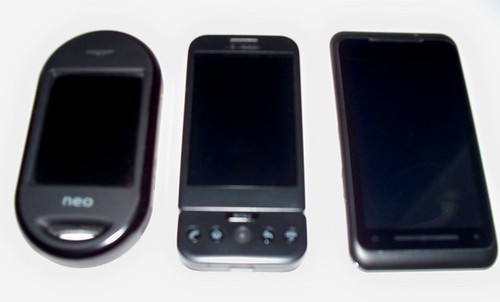I have to admit something today: I suffer from what I would call “gadget hunger”. Even if a device really does what I want, I become bored pretty soon, and want a new device. And guess what, there is often plenty of nice new hardware though it´s often just the hardware – the software is so often locked down as hell, that the device suddenly becomes less interesting for me – that’s the only thing that helps me staying solvent, because there is not much that’s as bad software without even the option of community driven fixes.
So I love this mobile devices. Well, it isn´t just mobility (Example: Recently I learned that there are not only rollable computer keyboards, but rollable piano keyboards as well), but somehow it´s mostly mobile computing devices.
Computing is the possibly the keyword, or explanation why I want rather open devices. As long as you have to stick to one certain OS, you might not find the appropriate software for a certain usage case. Or just not the software you would prefer if everything would be possible. Let´s face it: There is no perfect OS. And another point: It´s fun to play with different software. It´s fun to see software evolving. The hardware might be very promising, but if I can´t even try the next version of the devices OS running on it (though it would technically work and even if it is just Windows Mobile), I will try to get rid of the device. This, just to name an example, happened to the Samsung i780 i once had, gorgeous hardware, much nicer than the Openmoko Freerunner that I just keep because it is so open.
So let´s talk about openess, or let´s call it flexibility. I believe that regarding mobile computing devices we have two kinds of flexibility. The one is hardware features, like device architecture (speed, number of different devices using similar hardware) or connectivity (3G, WLan, BT, USB (Host or Device)), the other is the software that runs on the device per default.
Let´s talk about the software, because it´s less self explinatory than the hardware part in my opinion. Why? Because it is not that obvious as it might seem. Knowing little about this openness thingie, you might e.g. believe that Linux devices are more open than those running Windows Mobile. But in many (or even most cases) it is not.
A good (but rather deprecated) example are Motorolas EZX phones. A team of able developers wanted to free these phones since they hit the market in late 2005. Still there is nothing like an open distribution for these devices – as the OpenEZX project is focussed on the kernel and the now nicely supported devices have become rather old (and boring). Now why did it take so long? First of all these devices had a 2.4 kernel, so porting was supposedly not that easy. But there is another problem, that makes it tough to port SHR or Android to devices like the LiMo running phones: bootloaders, plenty of them, requiring signed images. Often there is no easy way to install additional native (non-Java/J2ME) software and though this is changing (App Stores), you will not be able to easily install software that helps “openning” the devices. Recent LiMo Devices like the Samsung H1 and M1 for Vodafone´s 360 social media platform still have non writable partitions (using compressed filesystems like cramfs) containing the core OS.
Let´s compare this to the (dying) Windows Mobile platform: Maybe you heard of HaRET (Hardware Reverse Engineering Tool), which is a (not only) linux bootloader launched just like a Windows Mobile application, usually used to load a kernel and rootfs from SD – no changes to the actual hardware have to be done, no need to hack a variety of bootloaders (at the risk of bricking your device) as long as you have a HaRET version that supports your phones hardware platform.
Time to get back to the start, gadget hunger, or why i started to write this unreadable crap: Recently I spent some time looking for a cheap snapdragon device – and because I did so on ebay, because I ´ve got no problem with using used stuff, as long it is cheap, I ran into the Toshiba TG01 aka “Tsunagi“, the first Snapdragon phone, though one could call it Pocket PC, MID or slate as well, as it is a damn thin (9,9mm) 4,1 inch touchscreen device. And yes, I am tempted to buy one of these, even though there aren´t even “real” attempts to run Linux on the TG01 – there is hope, as it is ported to HTCs´ HD2 (HaRET) and because there are several Android devices out there using the Snapdragon platform as well. And it supports USB Host right of the box ;-)
Admittedly this post would fit linmob just as good or better, but I had to post something here. I really have to learn to write about things that are not gadgets or bad storys again.. ;-)








